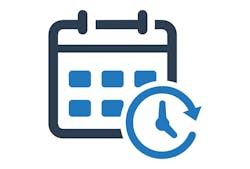If you use the scheduling tools in a computerized maintenance management system (CMMS) as a mere replacement for legacy scheduling practices, you are losing serious advantages. Those tools can allow you to capture labor per job. For example, you can use the history features of the scheduling tools to see that the PM on Asset 71B18 takes an average of 1.3 hr to perform. Or that once it took nearly 2 hr (viewing the notes on that PM will show you why).
You can also look at the labor per worker. You can see that Jim averaged 11.5 hr each week of PM work last quarter while Sandy averaged 26.8 hr of PM work. This can, for example, highlight where a better allocation of PM work is probably needed.
What if you combine the two? Now you can see that Rob consistently takes 25% longer to complete a particular PM than any of the other four people who perform it. Does this mean Rob is not good at this PM, or does it mean he is the only one taking the time to do it correctly? Without this combination, you would not even know to ask this question, and the answer is very important.
About the Author

Mark Lamendola
Mark is an expert in maintenance management, having racked up an impressive track record during his time working in the field. He also has extensive knowledge of, and practical expertise with, the National Electrical Code (NEC). Through his consulting business, he provides articles and training materials on electrical topics, specializing in making difficult subjects easy to understand and focusing on the practical aspects of electrical work.
Prior to starting his own business, Mark served as the Technical Editor on EC&M for six years, worked three years in nuclear maintenance, six years as a contract project engineer/project manager, three years as a systems engineer, and three years in plant maintenance management.
Mark earned an AAS degree from Rock Valley College, a BSEET from Columbia Pacific University, and an MBA from Lake Erie College. He’s also completed several related certifications over the years and even was formerly licensed as a Master Electrician. He is a Senior Member of the IEEE and past Chairman of the Kansas City Chapters of both the IEEE and the IEEE Computer Society. Mark also served as the program director for, a board member of, and webmaster of, the Midwest Chapter of the 7x24 Exchange. He has also held memberships with the following organizations: NETA, NFPA, International Association of Webmasters, and Institute of Certified Professional Managers.
